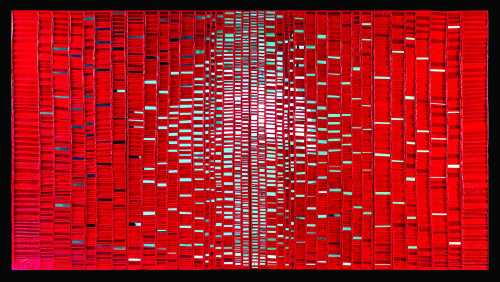About Iraj Eskandari
Iraj Eskandari was born in Kashmir in 1956. He learned the basics of painting in Mashhad from Mansour Dollou and simultaneously became familiar with carpet drawing. After finishing high school, he was admitted to the School of Decorative Arts and moved to Tehran to study painting. During the 1978 revolution, Eskandari completed his bachelor's degree in painting and then went to France to continue his studies. During a one-year training course, he became acquainted with mural painting styles before returning to Iran. Eskandari completed his master's degree in art research at Tehran University of Art and received a doctorate in art research from the same university in 2005.
Alongside his painting career, Eskandari has always been involved in academia, teaching art. He is a faculty member at Tehran University of Art. Eskandari's works were first exhibited in 1972 at the Mashhad Chamber of Commerce. After the revolution, his works have been frequently presented both inside and outside Iran in individual and group exhibitions.
Initially, Eskandari's works served the revolution, but over time, he distanced himself from social and political themes, moving towards abstraction. The simplification of elements and the dominance of geometric expressions in the representation of elements and spatial composition are the main characteristics of these works. These features are rooted in his long-standing interest in Iranian carpet motifs, paintings, and architecture. Most of these works have lyrical themes. In creating his paintings, Eskandari draws from ancient literature, incorporating romantic poems by poets such as Nizami Ganjavi. Art critic Ruyin Pakbaz describes this period of Eskandari's work as having a symbolist tendency: "He often combines simplified human and bird figures with geometric shapes and creates various textures on the surface of the work." During this period, Eskandari developed an innovative and mixed approach to materials. His paints are often based on binder glue and sit thickly on the canvas. In some of his works, he pursued this path to achieve pure abstraction.
The Most Expensive Artwork
At Auctions
First Attendance
11 January 2019
# Attendance
7
# Artworks
7
Average Realized Price
17,015 USD
Average Min Estimate
8,245 USD
Average Max Estimate
11,981 USD
Sell-through Rate
100%
Average Growth of Artwork Worth
79.491%
Timeline
The 24th Tehran - Contemporary Iranian Art auction
3 October
In Memory of Hadi Jamali 1 exhibition
1 November
The 20th Tehran- Modern and Contemporary Iranian Art auction
5 July
The 17th Tehran Modern and Contemporary Iranian Art auction
18 July
The Eighth Exhibition of Haftsamar Friends exhibition
24 June
Mirror reflections exhibition
19 January
The 15th Tehran- Modern Iranian Art auction
14 January
The 13th Tehran- Modern and Contemporary Iranian Art auction
15 January
دوازدهمین دوره حراج تهران auction
17 January
White Black Gray exhibition
13 December
Retrospective Iraj Eskandari - Solo Show exhibition
6 December
Cama Chain exhibition
1 November
Ms. and Mr. Artist exhibition
16 August
Up to 10 Million exhibition
8 February
دهمین دوره حراج تهران auction
11 January
Far, But Near exhibition
28 December
The Story of Shirin exhibition
16 November
The Fourth Annual Auction of Behnam Daheshpour Gallery exhibition
28 June
Iraj Eskandari solo exhibition exhibition
21 March
Iraj Eskandari solo exhibition exhibition
20 March
Iraj Eskandari solo exhibition exhibition
21 March
Articles
۱7th Tehran Auction Sales Report 26 July 2023
The 17th Tehran auction: modern and contemporary, was held on Friday July 21st, 2023 at Parsian Azadi Hotel. This auction achieved a total sale of 214 billion tomans equivalent to 4.3 million dollars, which was a growth of 77.8% compared to the previous period. Artchart has observed the 17th Tehran auction in the upcoming report.

